Crestron Home Review: When The Pros Install Your Smart Home
- Convenience and flexibility of professional installation
- Huge array of well-integrated products
- Rock-solid system stability
- Rapid pace of system upgrades and improvements
- More expensive than a DIY system
- Third-party integration doesn't include all consumer brands
The smart home is, despite the name, usually pretty stupid. For all the talk of ecosystems and cross-platform standards, all too often home automation simply turns our phones into fancy remotes, sending us flipping through apps to adjust lights, music, and security. Crestron Home, a relatively new smart home option from a long-standing name in the industry, has an app too, but arguably what's most impressive is how rarely you actually need it.
Crestron Home versus Crestron
Crestron Home isn't the company's first attempt at a more mainstream smart home platform. Pyng came before it – arguably a little too ahead of its time to be truly effective – as a cut-down version of "full" Crestron. Problem was, it didn't quite have the functionality or the ease of install to elevate it beyond dealers' impression of Pyng as "Crestron Lite."
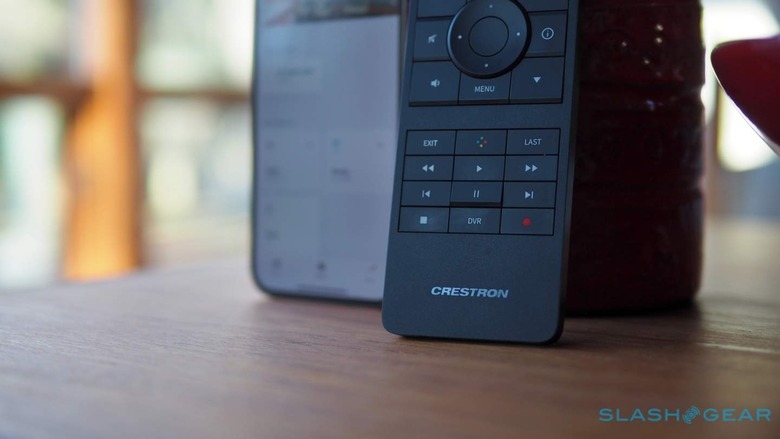
Crestron Home takes a different approach. It works with a (growing) subset of the regular Crestron hardware, from switches to shades and touchscreens, but standardizes what have arguably been some of the most time-consuming aspects of a professional smart home install. The Crestron Home app, and the touch panel interface, for example, offer a single, preconfigured UI with straightforward buttons and controls.

You can add home and room images, and reorder how each section is shown, but it's a far cry from the infinite customization potential of full Crestron. That simplification lends speed, though: installers don't need a specialized programmer to build unique interfaces for each project, saving considerably on both money and time.

It's much the same for the backend. Crestron Home is configured using an iPad app, the complexity of which – intended for dealers, but (assuming you have the passwords, which dealers will supply) not entirely un-tinkering-friendly for reasonably tech-savvy homeowners – is just somewhat north of plug-and-play. There's a learning curve, certainly, but it's much faster than full Crestron which requires any change or addition be programmed in, loaded to the central processor, and then rolled out to all the controls.

On a complex system, that can take 30+ minutes to finish, depending on the skill of the programmer themselves. In Crestron Home, changes made in the iPad app are reflected immediately in the system. You can even see controls appear and disappear in real-time in the Crestron Home iPhone, Android, and iPad apps.
Not for nothing, then, is Crestron Home finding favor with installers wanting to get more done, faster. As my own installer, Jeremy Duron of MiHome Systems, explained, what took a day and a half in my case could've easily taken double that had they been fitting full Crestron. That's assuming each dealer has their own little toolkit of pre-built Crestron modules and code, too, to help streamline a full install.

The company itself has been going the extra mile to squash any sense that Crestron Home is the lesser-loved child in the family. A rapid pace of updates – every six weeks, on average – has helped demonstrate Crestron's commitment to the system, typically adding both user- and dealer-facing features, along with expanding the list of supported hardware.
Crestron isn't going away, though, and Crestron Home isn't intended to replace it. At the extreme end of the market – think huge mansions, businesses, hotels, and mega-yachts – there'll always be a need for something exceptionally customizable. Those projects, though, are relatively few and far between; for the more typical control over lights, media, HVAC, shades, and similar, Crestron Home has a lot of advantages.
The upside and downside to professional installation
Delayed gratification. That – beyond cost – is probably the biggest drawback to opting for a professionally-installed smart home system like Crestron Home. Finding an installer, getting the initial assessment, and then waiting for the actual site work is a process measured in months. That's a very different timescale from just buying a smart plug with next-day shipping.

Then again, delayed gratification can strike the DIY enthusiast, too. While plugging in a smart bulb doesn't take much effort, replacing traditional switches and outlets with connected versions is more complex. I have examples of those in the closet which I've never got around to reading the installation instructions for, taking the time to shut off the correct breakers, and going to the effort of fitting them myself.
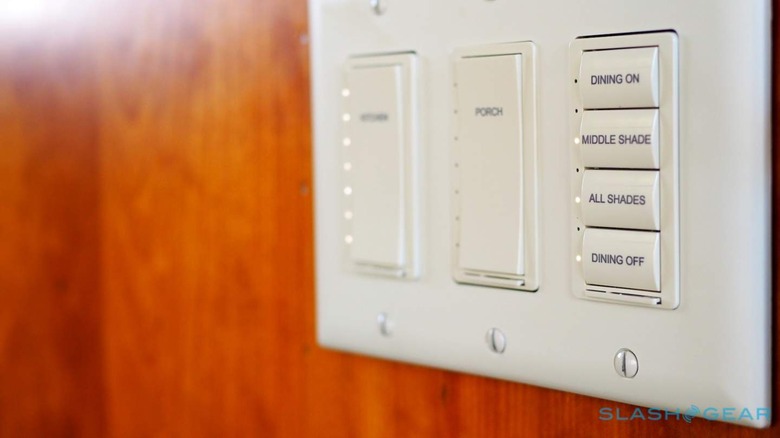
Fragmentation remains a big issue in the smart home, with so many players with devices that work to differing degrees with other hardware. Crestron Home handles that by limiting the number of third-party devices the system will work with, prioritizing consistent and predictable results day to day over a laundry list of "compatibility" that doesn't always live up to the name.
It's most straightforward, of course, if you're using Crestron's own products. That includes everything from wall switches, to touchscreens, to lamp modules, to audio and video distribution, connected thermostats, shades, and remotes. It's a growing list, on top of which third-party hardware from manufacturers like Lutron, Yale, Kwikset, and Sonos integrates pretty much seamlessly.

Beyond that, things get trickier. Where Crestron supports its own programming language, through which just about anything can be integrated by a reasonably-skilled installer, Crestron Home relies on "extensions" which are basically third-party drivers. There's a slowly growing ecosystem of them, but it might mean that any existing hardware you have won't necessarily play nicely.
Out of the box, for example, Crestron Home doesn't work with Philips Hue lighting. I'm a big fan of Hue, and have color-changing bulbs and lamps in multiple rooms already. Happily, there's a Hue extension available by UK developers Ultamation which allows control over Hue bulbs – including scenes, color, and brightness – through Crestron Home. You can still use existing Hue apps and any physical controls you might have, too, and changes there are also reflected in the Crestron app. Ultamation also has a Hunter Douglas Powerview extension, which meant the motorized shades I have in one room could also be linked to Crestron Home.
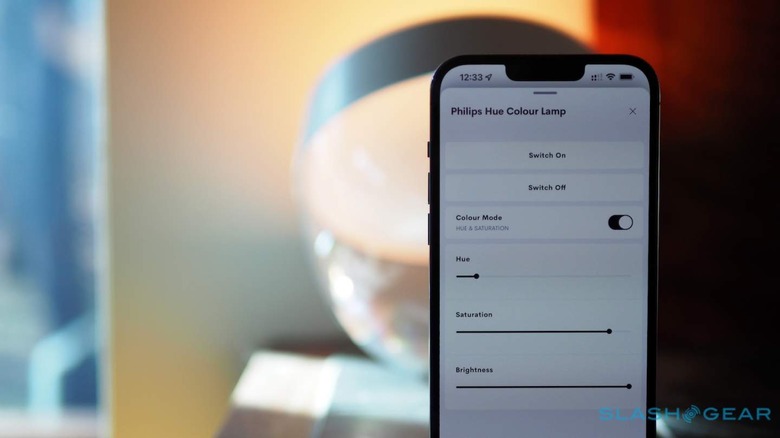
It's worth highlighting just how much this situation is an evolving one. When the automation system was first installed, for example, the Powerview extension wasn't available; it was only later on that it was released. Hardware support is expanding with each release, too, both through the company's existing catalog and new options like its battery-powered shades.
Crestron Home is designed with remote management in mind, meanwhile, which means that dealers can access it – with permission – from afar and make software changes, which is a whole lot quicker and simpler (and cheaper) than an on-site visit. The downside is that a lot of well-known consumer brands like Nest simply aren't compatible.

Living in a Crestron Home
No single smart home is the same, and so the Crestron Home experience starts with a dealer visit. In the midst of a pandemic, that meant being masked-up, too. Over the course of an hour or two, I walked Jeremy around the house, explaining how we use each room and what equipment – TVs, speakers, and the like – are already installed.

Unless you built from scratch or did a heavy remodel, most people are living with inherited controls like light switches; in my case, that meant several wall plates with three or four toggles apiece, along with a number of confusing two- or even three-way circuits. On top of that I'd added my own Hue lights, plus Sonos speakers in several rooms. Two TVs – both with Apple TV – would be carried over, and an exterior CCTV camera, while the garage door would also be linked.
Only the most commonly-used rooms got the Crestron upgrade: kitchen, dining room, lounge, sunroom, TV room, foyer, the downstairs hallway, the carport, and the garage. However, since I can use the Crestron Home setup app to add Hue lights and Sonos speakers to other rooms, I can control them through the same phone app too.

The actual installation took place over 1.5 days. For the first, a team of three handled replacing light switches with Crestron's smart versions, as well as installing the central processor, switching the front door lock over to a connected Yale version, fitting IR blasters to TVs and Apple TVs, and then registering everything with the system. One of the advantages is the range of ways a cunning installer can take control: best is when – as with some projectors and TVs, for example – you can plug in directly, and control everything digitally. However, Crestron Home can fire out IR commands just like a remote if needed (though with a glued-on IR bug for maximum stability) to cover all the bases.

The light switches look much like normal, though they hook up to Crestron's proprietary infiNET EX wireless network. It's a mesh standard, so each switch also acts as a range extender. By default it's a rocker faceplate, but there are 2 and 4 button versions which clip on and off. A switch can control the lighting load it's wired into directly, but also be used as a control panel for other things: summoning lighting scenes, for example, or controlling shades or even media playback.
One switch just outside the bedroom, for example, is now a "Goodnight" button. Press it for two seconds and all the lights shut off, the front door locks, and the shades close. If the garage door has been left open, that will shut too, and any TVs or music still playing will be turned off as well. There's support for single and double presses, too: the switch that controls the ceiling fan in the lounge, for example, also opens the shades when double-tapped.

A lot of the time, people associate smart homes with eye-catching touchscreens built into the wall. Crestron has those, of course, between 5- and 10-inches in size, and at first I thought it was a shame none were included in my particular install. Turns out, though, there's a lot to be said for familiar switches.
For a start, they're far more user-friendly to those people in the house who aren't all that tech-savvy. Being able to hit a button and turn on the overhead lights, rather than dig through a touchscreen UI or – worse still – have to pull out your phone, is far preferable. Custom switch engraving, which required a revisit by Jeremy a couple of months later to quickly install the new faceplates, makes it easier to see which button does what.
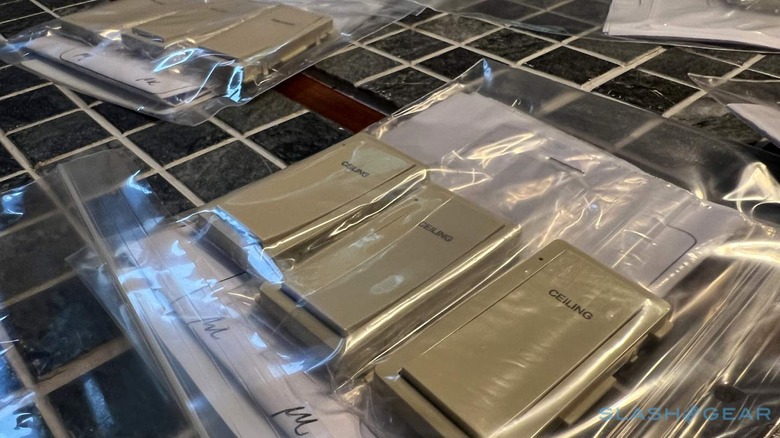
Two of Crestron's flagship TSR-310 remotes, meanwhile, combine 3-inch touchscreens and backlit physical buttons. There's one for each TV, sitting upright in charging docks, with sufficient keys to cover the majority of sources; the touchscreen can be swiped to show lighting scenes, too. While they default to the room they're located in, you can also switch to other rooms in the home and control lights and media there, too. With my Sonos favorites set up, for example, I could load a playlist and have it running across the whole home, or switch it to just one room, all from the remote.
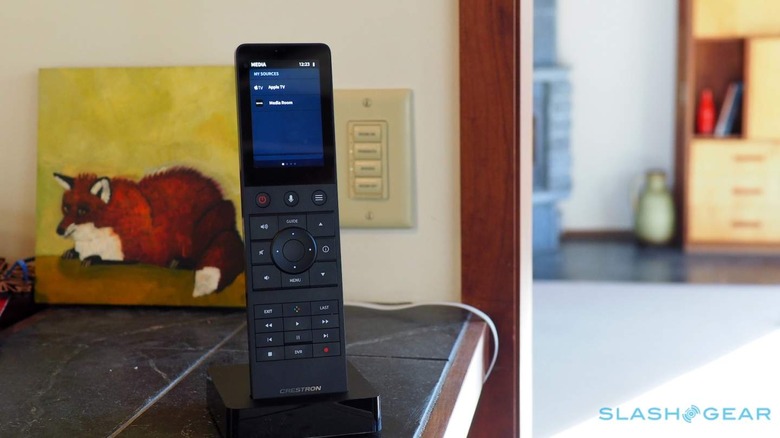
One of the frustrations of living in a "smart" home after any period of time can be the realization that you've basically just moved all your different switches and controls to a wide array of apps on your phone. That's particularly the case with a DIY system, where trying to get different components to play nicely – and be controlled centrally – can be a chore. One of the most significant home-friendly elements, then, are smart scenes.

Obviously, you can hit a light switch and have the overhead light it's connected to turn on. A clever installer, though, will take into account the user-friendliness of the room: that might mean having direct and indirect lighting all activated from one button, with different brightness levels depending on how the space is being used. The lighting scene that's summoned can be filtered by time, too: pressing the switch in the kitchen during the day gets you full brightness, but past 10pm the levels are lower and more intimate.
If I unlock the front door in the evening, for instance, the foyer and carport lights will automatically come on at low brightness. So, too, will pendant lights in the kitchen, and accent lighting on the stairs – even though they're ostensibly controlled by completely separate switch banks.
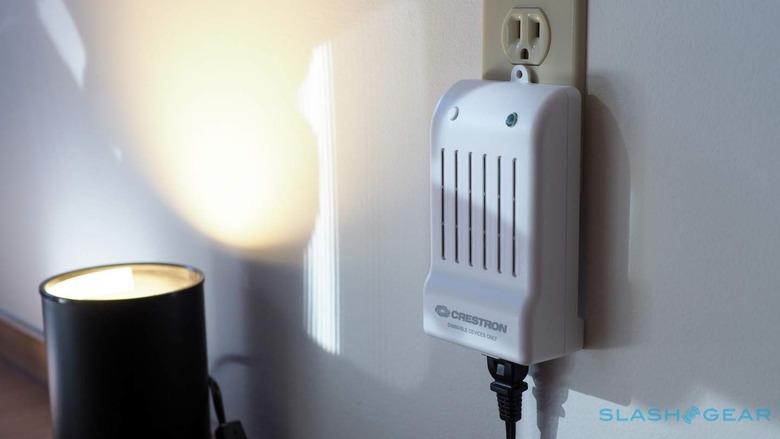
One of the more recent – and valuable – additions to Crestron Home is the ability to create your own lighting scenes. In a full Crestron system, that's usually the sole preserve of the installer; until now with Crestron Home, you'd need to use the setup app to configure new scenes. With this new addition, however, you can create and modify your own scenes as you see fit, without having to get an installer to do it.
While I went through a post-install phase of eager tinkering, over time we've simply settled into living in a house that operates that bit more intelligently. I'm used to having to sing the praises of new tech – especially home automation – in order to win over my partner. Here, little things like the ability to remotely open the garage door before you've even left the house did the trick. So, too, has Crestron Home's stability, and the fact that the app isn't required to get the smart experience.

Unpredictability is the plague of the smart home. People will put up with their laptops occasionally lagging or crashing; they absolutely won't have the same patience if their light switches don't work, or music won't play properly when they want it. That's been somewhere Crestron Home has really shined.
In fact, I've had one crash of the central controller, and that was several firmware iterations ago. The system has restarted cleanly and predictably after multiple power cuts, too, which is more than I can say for a lot of other DIY smart home tech I've tried over the years.

The only real omission has been around voice control. There's fledgling Amazon Alexa support, but the general consensus from the Crestron dealer community is that it can be more trouble than it's worth at this point. Meanwhile, smart home-focused alternatives like Josh.ai are promising, and have native support for Crestron Home, but I've yet to try them out.
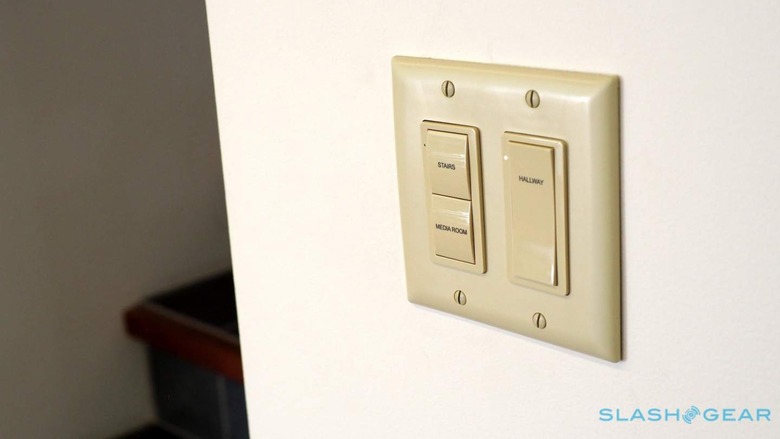
Making choices like that is a key part of any smart home install, of course: depending on your primary interest, you can take Crestron Home in a number of different directions. Lighting is an obvious one, but if you're a movie fan or have numerous different sources and screens, Crestron has a whole range of media transmitters that can handle cable, satellite, streaming, and other content, funneling it around the home from a centralized location. Or, there's whole-home audio, with installed speakers suitable for indoor and outdoor listening.
The limiting factor, for most, is going to be price. Opting for a professionally-installed system is invariably going to be more expensive than a DIY approach, and Crestron does have a reputation for being among the more costly options in the smart home world. Crestron Home, though, does have some advantages there.
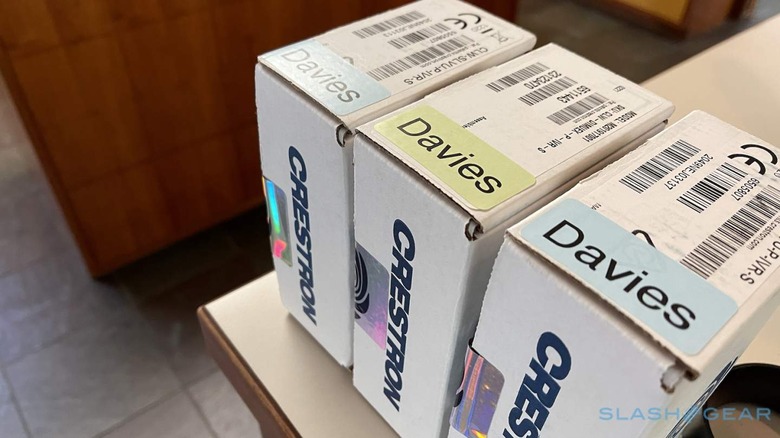
The hardware itself is not cheap. Each light switch has a list price of $250; each touchscreen remote is $1,000. The three custom-sized shades were just over $1,000 apiece, and the MC4-R controller is $2,000. There's definitely a premium for infiNET EX-compatible hardware, too: a Crestron-friendly Yale smart lock is $462, more than twice the price of the non-Crestron version.
Add it all up, and there's about $14,000's worth of hardware involved in my particular install, with MiHome System's labor fees on top. Crestron Home's easier, more time-efficient setup and configuration does help trim those installation fees considerably, however, and you're paying for an altogether more stable experience than any DIY system I've tried.
Crestron Home Verdict
You could get a lot of off-the-shelf smart home gadgets for $14k. I'm pretty confident, though, that they wouldn't fit together so cohesively as Crestron's system does, nor allow you to be so hands-off with their installation. And, frankly, while I'm someone who enjoys tinkering with my tech, troubleshooting wireless glitches and mains electricity really isn't as fun as tweaking the odd lighting scene.

It's tough, in a sense, to give a single verdict on Crestron Home. The smart home platform is iterating and evolving at such a pace, the system I reviewed here won't necessarily be the same system that you consider one month, three months, or a year down the line. So far I've only seen improvements during my time with the platform, and it's entirely possible that lingering annoyances will be massaged out too.
Is it more expensive than other options? Certainly, though definitely not as costly as I expected from my prior knowledge of Crestron. You're paying, here, for the convenience and expertise of a professional; for the consistency and reliability of pro-grade hardware; and for the sort of clean integration that most DIY systems can't come close to. Most important, though, is the feeling that your home is working with you, and for you, rather than simply giving you remote control over it from a folder full of apps. That, it turns out, is when the smart home gets truly smart.
